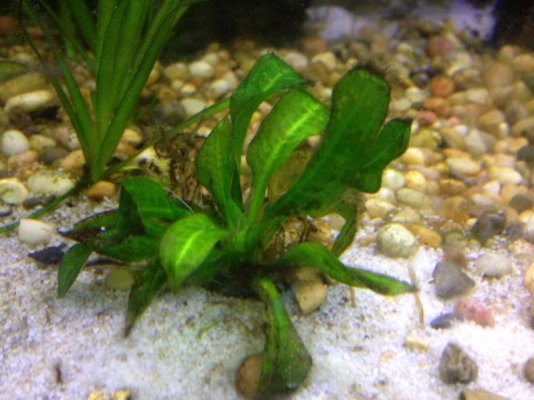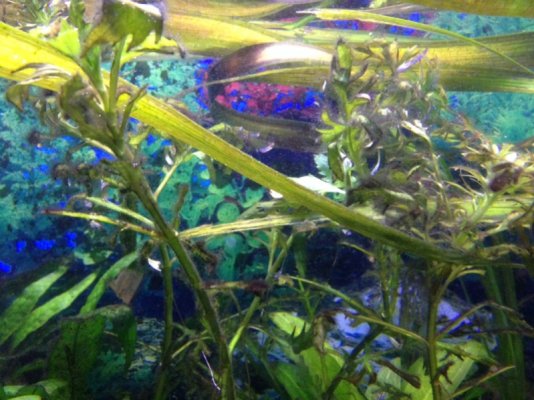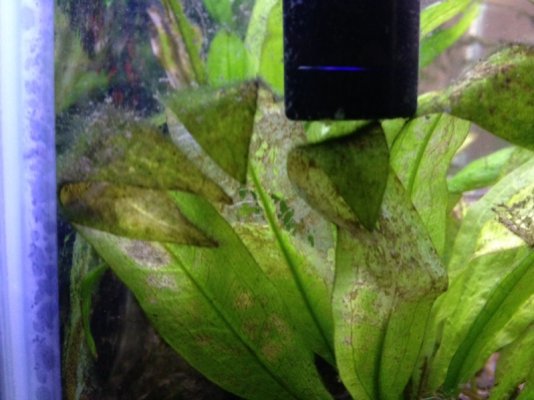WBAC88
Aquarium Advice Activist
The setup first:
70g freshwater tank
PFS substrate
Dose with Flourish Comprehensive with weekly PWC, daily Flourish excel, Flourish root tabs every few months
Plants: anubias, Java fern, jungle vals, amazon swords, a small spiky plant that propagates that I can't remember the name of, and a few stalks of wisteria
Stock: 5 neons, 7 pristellas, 3 mid sized angels and a clown nose pleco
Measurements:
Ammonia: 0ppm
Nitrites: 0ppm
Nitrates: 20-25ppm
Lighting: unknown
No co2
This is a tank that's been through a lot of changes over the last couple years, but starting maybe a year ago, I started noticing that a lot of my plants, starting with the amazon swords started developing holes in the leaves. Eventually the swords died off almost completely and are only now regrowing to about half their former size. Adding more ferts and the root tabs helped a little but the leaves are still very thin, almost translucent.
The vals are doing the best, but the anubias and some of the java fern still have the holes. I've seen that sometimes missing certain nutrients can cause this, but can't quite figure out which might do that or how to dose them. I know that my lighting isn't fantastic, so I've tried to keep to to lower light plants, since I don't want to have to deal with co2. Lights are on about 8 hrs a day.
I really want my tank looking like it did for the first two or so years of its life, which was lush and green and healthy, so I'm willing to try anything. If you need any more info to help you or you have any suggestions at all please let me know! Thanks!
70g freshwater tank
PFS substrate
Dose with Flourish Comprehensive with weekly PWC, daily Flourish excel, Flourish root tabs every few months
Plants: anubias, Java fern, jungle vals, amazon swords, a small spiky plant that propagates that I can't remember the name of, and a few stalks of wisteria
Stock: 5 neons, 7 pristellas, 3 mid sized angels and a clown nose pleco
Measurements:
Ammonia: 0ppm
Nitrites: 0ppm
Nitrates: 20-25ppm
Lighting: unknown
No co2
This is a tank that's been through a lot of changes over the last couple years, but starting maybe a year ago, I started noticing that a lot of my plants, starting with the amazon swords started developing holes in the leaves. Eventually the swords died off almost completely and are only now regrowing to about half their former size. Adding more ferts and the root tabs helped a little but the leaves are still very thin, almost translucent.
The vals are doing the best, but the anubias and some of the java fern still have the holes. I've seen that sometimes missing certain nutrients can cause this, but can't quite figure out which might do that or how to dose them. I know that my lighting isn't fantastic, so I've tried to keep to to lower light plants, since I don't want to have to deal with co2. Lights are on about 8 hrs a day.
I really want my tank looking like it did for the first two or so years of its life, which was lush and green and healthy, so I'm willing to try anything. If you need any more info to help you or you have any suggestions at all please let me know! Thanks!



